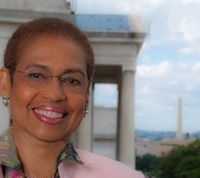CAP Reports Analyze Impact, Challenges of Renewable Energy, Supply Chain, and Conservation Investments in Rural America
Washington, D.C. – RealEstateRama – The Biden administration has made historic investments in building a clean energy economy, and many of these investments will be made in rural and Tribal communities. It’s a big opportunity for the rural economy, and meeting these national goals will require the participation and leadership of rural leaders.
A new series of reports from the Center for American Progress addresses two of the administration’s key programs guiding these investments: the U.S. Department of Energy’s community benefits plan (CBP) and the U.S. Department of Agriculture’s Rural Partners Network (RPN). The reports review how the programs have worked so far and recommend areas for improvement.
“These programs are essential, but this is the area of the whole-of-government approach that is weakest,” said Mark Haggerty, senior fellow at CAP and co-author of the reports. “They have the least money, are limited by geography, and are often poorly coordinated. The programs lack a national, diverse coalition advocating for learning, implementation success, and continued funding and policy formation. There’s a serious risk of opposition to spending and siting infrastructure in rural places if policy doesn’t deliver local benefits.”
Developers applying for Energy Department grant and loan programs must craft a CPB to leverage public investments into broadly shared benefits in the communities where projects are located. CPBs are already guiding more robust engagement between companies and host communities, including engagement with labor unions, colleges and universities, and community organizations.
But one of the report finds that several improvements would make the process more transparent and easier to navigate, and lead to better results. These include improving coordination at the federal level, leveraging private investments in CBPs, building capacity in communities to facilitate more meaningful engagement, and funding evaluation and case studies.
The RPN is the most robust effort in generations to coordinate rural-targeted capacity-building efforts across different federal agencies, along with the resources to help this coordination, according to the second report. It places community liaisons in underserved rural areas that have historically faced challenges accessing and managing federal grants and resources. This week’s announcement of $2 billion going to projects proposed by RPN community networks is proof that it works, and the report calls for the RPN to reach more communities across the United States.
A third report describes 10 federal programs that are designed to expand capacity and bridge the gap between federal resources and the rural and Tribal communities that need them most.
Read the reports:
- “Leveraging Renewable Energy Investments for Rural Development: The DOE Community Benefits Plans” by Mark Haggerty and Anastasios Chryssikopoulos
- “Matchmaking for Community Benefit: The Rural Partners Network Connects Rural Leaders with Federal Resources” by Jenny Tran and Mark Haggerty
- “Guide to Rural and Tribal Capacity-Building Programs: Helping Underresourced Communities Take Advantage of Capital Investments” by Mark Haggerty and Chéri Smith
For more information or to speak with an expert, please contact Sam Hananel at ">.
CONTACT
Sam Hananel

















